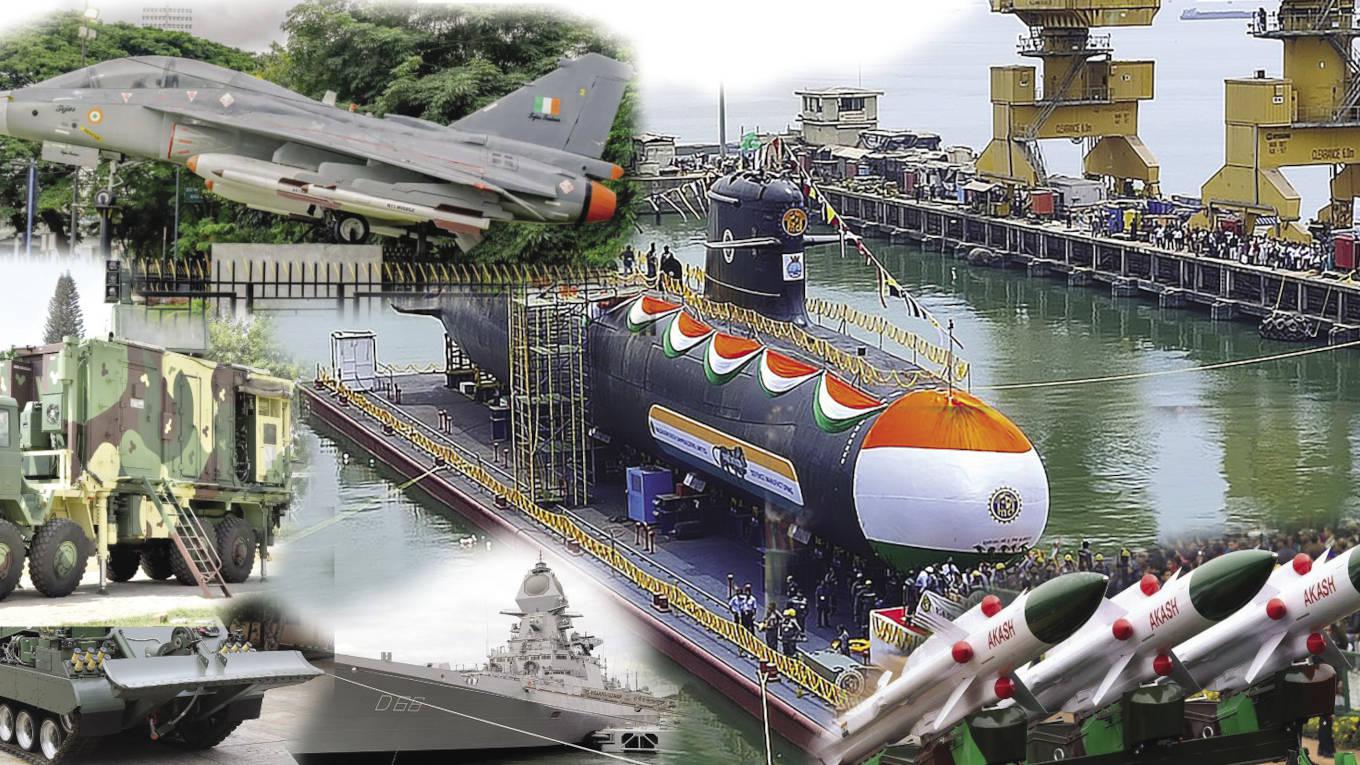-
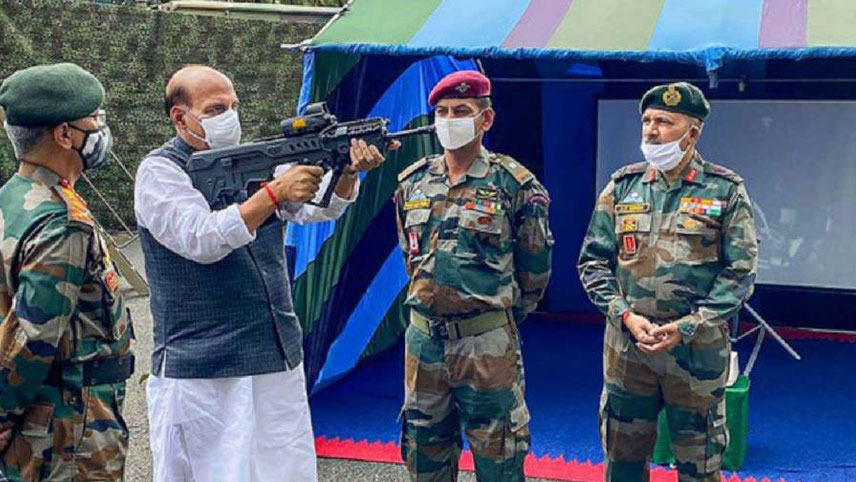
Singh: Our objective is to develop India as a defence manufacturing hub
China threat worrisome
It is clear from the review that the threat from our north-eastern border is more worrisome than that from the western border. Experts say that if one looks closely at the infrastructure development on the India-China border pursued by China in the last decade, and especially since 2020, it becomes obvious that Xi Jinping has a bigger and more ambitious agenda than Mao Zedong vis-à-vis India.
For instance, it is now clear that the skirmish that took place in December was aided by new road infrastructure on the Chinese side allowing access to key locations on the Yangste plateau more easily than a year ago.
Rajiv Dogra, India's former Permanent Representative to the UN, in his just released and extremely pertinent book, War Time: The World in Danger, explains why India should be wary of Xi Jinping’s imperialistic designs. “Both (India and China) aspire for the peak position on a mountain called Asia, but China is in no mood to share that space with India,” he writes.
Nelam Deo, ex-diplomat and co-founder of Gateway House, also sees a rocky path ahead. “In the next few years, India-China ties are unlikely to ease. The situation does not look good and New Delhi must prepare for all eventualities. As the Chinese economy slows down thanks to the global downturn as well as the disruptions caused by the outbreak of Covid after Xi’s strict zero tolerance policy was lifted, China could face some hard moments. A brittle state could become adventurous,” she warns.
There is another view. “China’s focus this year will be on repairing the economy,” says General S Narasimhan, former head, Centre for Study of Contemporary China. “In international relations, China may follow a two-pronged strategy. When its core interests are impinged upon, wolf warrior mode; otherwise, a softer tone.”
In the face of such scenarios, what is India doing to enhance its battle preparedness and better equip its armed forces?
Bulk procurements
On 23 December, the MoD approved the procurement of a number of military platforms and weapons, including light tanks, anti-ship missiles and long-range guided bombs at a cost of Rs84,328 crore to boost the combat capabilities of the armed forces. The procurement proposals were cleared by the Defence Acquisition Council (DAC) headed by Defence Minister Rajnath Singh. In all, 24 Capital Acquisition Proposals spread across air force, navy, army and coast guard were approved.
While timelines and contract details are not available, the execution is likely to be expeditious in view of the skirmish at Tawang. According to reliable sources, the primary beneficiaries could be Bharat Dynamics, Solar Industries India and Garden Reach Shipbuilders, as the focus is on missile systems, explosives and next generation offshore patrol vessels.
Besides, companies into radar systems and telemetry such as Bharat Electronics are also likely to benefit from capital spending on surveillance systems. The important thing about the announcement was that out of Rs84,238 crore, 21 proposals worth Rs82,127 crore will be procured from indigenous sources.
The Modi government's emphasis on self-reliance and indigenisation has renewed focus on the defence sector. The government launched its Atmanirbhar Bharat scheme on 13 May, 2020, offering a template to reduce reliance on imports and increase indigenisation of equipment used by armed forces.
The face-off with China happened around the same time in eastern Ladakh’s Galwan sector. According to officials, “this brought additional weight to lend a sense of meaning and urgency to the idea of making India self-reliant in the defence sector”.
-
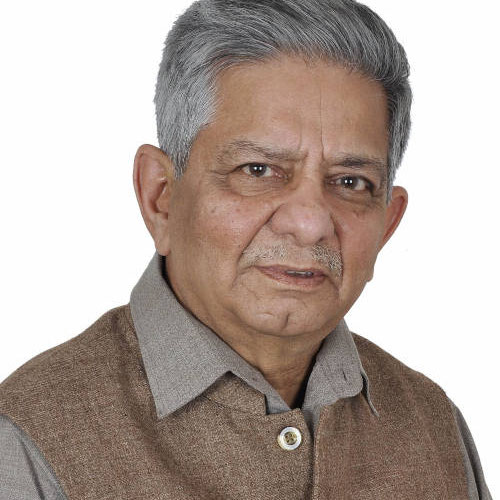
Dogra: be wary of Xi Jinping’s imperialistic designs
FDI rules relaxed
In 2020, India announced that foreign companies could invest up to 74 per cent in its defence manufacturing units, up from 49 per cent, without any government approval. The aim was to attract foreign companies with advanced technologies to set up factories in India in collaboration with local companies.
India fully opened its defence sector, previously confined to state-run companies, to the private sector in 2001. Initially, only 110 of the 330 private companies with industrial licences for such manufacturing began production. From 2020-21, the MoD began to earmark money for procurement from start-ups to rectify the situation. This further expedited the process of the private sector’s involvement in the defence business.
The DAC’s approval in December was part of a general strategy to promote indigenous military hardware, whether helicopters, tank engines, missiles or airborne early warning systems. In the 2022-23 budget, the total allocation under capital outlay of defence services was enhanced to Rs1.52 lakh crore. The government earmarked 68 per cent of all capital defence procurement for indigenous manufacturers.
In March 2022, the MoD announced that it planned to procure military equipment worth Rs5 lakh crore from domestic industries in the next 5-7 years in line with its policy of promoting indigenous defence manufacturing. These orders are likely to be placed with domestic state-run and private defence manufacturers.
It has since identified a ‘positive indigenisation list’ of more than 3,700 items, including components/line replacement units for defence PSUs, and 310 other defence-related items, with a timeline for banning imports to help local manufacturers meet the requirements of the armed forces in the coming years. Today, the defence manufacturing industry is sheltered by a clutch of supportive policies.
These developments have led to a rally in defence stocks. Suddenly, the sector is an attractive bet for investors. “Despite formidable stock returns of 70 per cent on average over a year, we believe there is further steam left in the sector on the back of robust order books and improving earnings quality,” says an ICICI Securities note.
Looking at the order book of two leading defence PSUs, one can get an idea of the attraction this sector holds for investors. Mazagon Dock Shipbuilders has an order book of nearly Rs42,000 crore and expects to record a revenue of more Rs7,000 crore in the ongoing fiscal. Bharat Electronics expects to clock aggregate orders worth over Rs20,000 crore each, in the current fiscal and in FY24.
Vikrant launch
In terms of achievements, the standout event of the year was the launch of the indigenous aircraft carrier INS Vikrant at the Cochin Shipyard. This has catapulted India into the list of the select few nations like the US, the UK, Russia, China and France which can design and manufacture their own warships with such capabilities.
The foundation laying of the C-295 transport aircraft manufacturing facility of the Tata-Airbus consortium at Vadodara also holds similar promise. It is the fit project of its kind in which a military aircraft will be manufactured in India by a private company. It is also the first time that the C295 aircraft will be manufactured outside Europe. The manufacturing unit will cater to the export of the transport aircraft and for additional orders by the IAF.
-
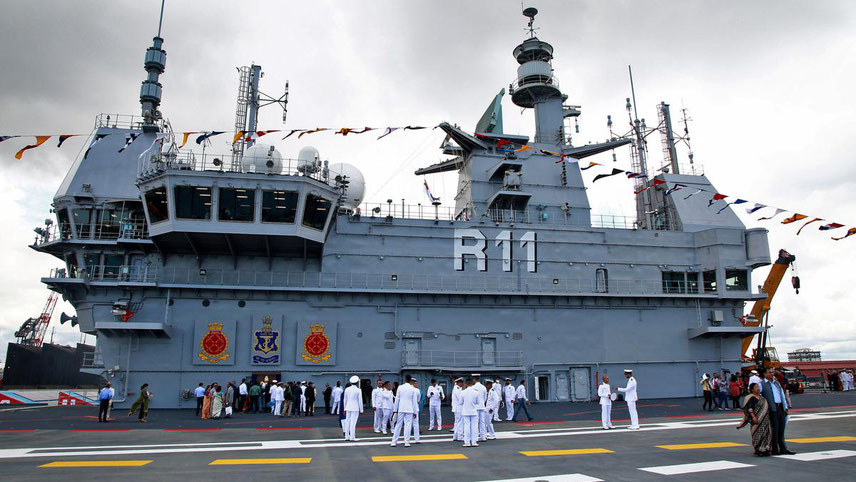
The standout event of the year was the launch of the indigenous aircraft carrier INS Vikrant at the Cochin Shipyard
More and effective military hardware is being designed, tested and operationalised. During the year, the successful test firing of the extended range version of the Brahmos missile, and the launch of the Prithvi-II missile, Agni-4 and Agni-3 missiles, the successful test of ballistic missile from the nuclear submarine INS Arihant, and the indigenously-developed helicopter-launched anti-tank guided missile 'Helina' were seen as important elements in the country’s growing defence manufacturing apparatus.
Private players
Competing with the PSUs are a host of private sector players, Tata Advanced Systems Ltd, Tata Power (SED), Mahindra, Mahindra Aerospace, Kalyani Strategic Systems Ltd, Bharat Forge, L&T India, Adani Defence and MIDHANI, to name a few. Smaller companies like DCX Systems, Kaynes Technology, Data Patterns and Paras Defence have come out with IPOs which have received an overwhelming response.
While addressing foreign ambassadors in advance of Aero India 2023, Rajnath Singh took pride in the fact that India’s defence exports have grown 8 times during the last 5 years. India’s defence exports to friendly countries stood at a record Rs14,000 crore in 2021-22, compared to Rs900 crore in 2014. He exuded confidence and said: “By 2023, defence exports will cross Rs19,000 crore and we are well on course to achieve the target of Rs25,000 crore worth of exports by 2025.” For that to happen, the government must ensure that there are no roadblocks in the path of what promises to be a sunrise sector of our economy.
Hindustan Aeronautics Limited is currently engaged in the design and development of the Advanced Medium Combat Aircraft (AMCA), a 5th generation fighter aircraft which aims to make India self-reliant in the field of defence aviation by replacing several imported jets which it is currently reliant on. AMCA’s designers have been keenly watching the performance of the 4.5 generation Tejas fighter jet, which was test-flown by the Aeronautical Development Agency (ADA) and scored back-to-back exemplary performance.
Another prized project is the indigenous Twin Engine Deck Based Fighter (TEDBF), whose prototype is expected to ready by 2026-27 with production to start somewhere around 2032. Navy Chief Admiral Hari Kumar says the future of Indian naval aviation is this aircraft.
“Ultimately we have to use our own weapons,” says a senior bureaucrat. ‘Because when it comes to the crunch, there are no guarantees of assured and quick supplies.”
Manufacturing hub
The government decided that the world’s second-largest army, fourth-largest air force and seventh-largest navy, can’t sustain itself through imports. “Our objective is to develop India as a defence manufacturing hub,” says Rajnath Singh.
DRDO, which has worked on short-range and long-range Agni and Prithvi missiles, Tejas light combat aircraft, tanks, multi-barrel rocket launchers, air defence systems and a wide range of radars and electronic warfare systems, is being asked to step up. The government has established two defence industrial corridors, in northern Uttar Pradesh and Tamil Nadu, with investments of $2.7 billion by 2024 by state-run and private sector companies.
The space is also getting crowded. For instance, some 500 companies in India are engaged in the manufacture of drones used in modern-day warfare, apart from their civilian uses. Who could have imagined that ten years ago?
-
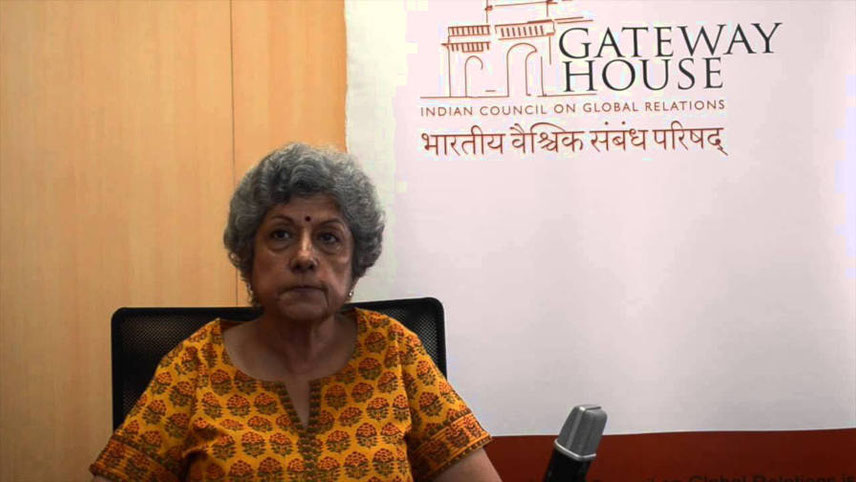
In the next few years, India-China ties are unlikely to ease. The situation does not look good and New Delhi must prepare for all eventualities
Nelam Deo, ex-diplomat and co-founder of Gateway House
The Army is expected to play the lead role in any military operation and the Indian Air Force and navy will follow key supplementary roles. Reforms are taking place so that the Army, the biggest of the three uniformed services, is structured on an Integrated Battle Group (IBG) model to transform it into a leaner and more agile force. This operation will also enhance operational preparedness and synergise the capability and combat potential of the armed forces during both war and peace.
The recently-introduced Agnipath scheme involves a temporary cadre of constabulary called Agniveers in the Army, Air Force and Navy. Though the official pitch for introducing this transformative scheme, which initially saw stiff resistance from candidates, was to make the forces youthful and tech-enabled, the main reason was to reduce the galloping pension bill on the treasury.
The first batch of Agniveers in the Army, Air Force and Navy have joined the service. While the impact assessment will take a year at least, the government hopes to make the forces leaner and tougher.
The Air Force is being primed for any eventuality. In the third week of December, the Eastern Air Command of the Indian Air Force (IAF) carried out a major two-day exercise to test its war-fighting capabilities and tactics. As part of the exercise, all the IAF bases in the Eastern Command – which include those in Assam’s Tezpur, Chhabua, Jorhat, Panagarh – were activated.
The focus of the exercise was to confirm how quickly offensive and defensive tactics could come into play in a war-like scenario. The aircraft in action included the newly-acquired Rafale, stationed at Hasimara in West Bengal, the Sukhoi-30 MKI and American Chinook helicopters.
Ever since tension rose at the LAC in 2020, the IAF has remained in full operational alert and has carried out several changes in its deployment and operational structures to fight off any Chinese threat. Since the middle of this year, Chinese air activity along the LAC has increased, leading to some frayed nerves in the two air forces.
In August, senior Air Force officers from India and China even held talks to cool tempers. As per the agreement between India and China, no fighter aircraft or armed helicopter can come within 10 km of the LAC. The limit for logistics helicopters is one km.
Navy’s role
Mohan Guruswamy, a military strategist, says that India’s arms build-up and preparations make it apparent that a conflict will not be confined to the mountains and valleys of the Himalayas but will involve the Navy as well.
It will be logical for India to extend a Himalayan war to the Indian Ocean, particularly as India’s geographical location puts it astride the sea-lanes running about 300-500 km from its shore which carry over two-thirds of China’s oil imports.
To pay for this oil, 41 per cent of China’s exports are now to the MENA region. India can effectively interdict Chinese foreign trade with the region. The Chinese Navy will be loath to engage the Indian Navy in an area where the leading Indian Ocean power, the US Navy, also dominates.
-
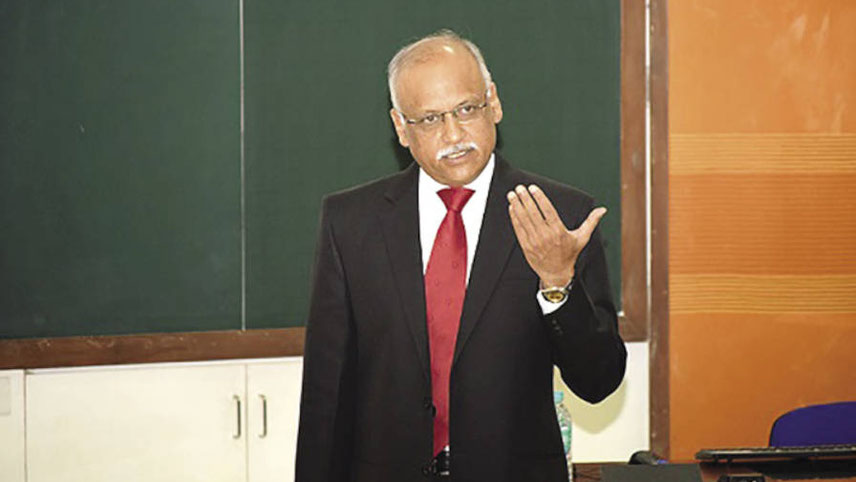
In international relations, China may follow a two-pronged strategy. When its core interests are impinged upon, wolf warrior mode; otherwise, a softer tone
General S Narasimhan, former head, Centre for Study of Contemporary China
But while the government is pushing for greater self-reliance, India lacks a strong industrial base for military equipment. For instance, the Defence Ministry has also signed nearly 60 offset contracts worth over $13 billion by 2027 for purchases of fighter aircraft and weapons from the United States, France, Russia and Israel. The deals require 30-50 per cent of the contract value to be returned to India as offsets or re-investments.
The foreign supplier is obliged to buy a certain amount of goods from the importing country as part of the contract. The government wants part of that money to benefit its defence industry or to allow the country to gain in terms of technology by setting up joint ventures with Indian companies to manufacture defence equipment. The progress on offsets, according to an official, has been “disheartening”.
Soviet legacy
Then there is the Soviet-Russian overhang over our defence establishment. India depends on Russia for nearly 60 per cent of its defence equipment. The Air Force has more than 410 Soviet and Russian fighters with a mix of imported and licence-built platforms, including Su30s, MiG-21s and MiG 29s. All require Russian spares and components. India also has Russian submarines, tanks, helicopters, submarines, frigates and missiles.
But after Russia’s intervention in Ukraine, there are fears of a shortfall in supplies to India from its main supplier due to western sanctions. To meet its short-term requirements India had to consider purchases from former Soviet republics and Warsaw Pact countries. Bulgaria, Poland, Georgia, Kazakhstan and Ukraine could help India with spare supplies for Russian fighter Sukhoi and MiG-29 aircraft and with upgrading tanks and armoured vehicles as they have similar Soviet-origin platforms and spares.
During his last visit, Russian President Vladimir Putin had agreed to shift some manufacturing of Russia hardware to India to meet its requirements. Imports of helicopters, corvettes, tank engines, missiles and airborne early warning systems from Russia were eventually to be halted. “The requirements of the Russian military itself, with the kind of losses that it is suffering, may mean some of those spares that we need will probably get diverted,” said DS Hooda, a retired Indian army general.
The process of shifting the manufacturing of spare parts to India has begun, but it is unclear how quickly India can make up for any shortfalls of supplies as it takes at least 5 years for any significant progress in such an exercise.
Sanctions on Russia
However, the sanctions on Moscow could delay, if not jeopardise, India’s recent $375 million BrahMos cruise missile export order from the Philippines. Russia’s NPO Mashinostroyenia, which formed a joint venture with Defence Research and Development Organisation (DRDO) to design, upgrade and manufacture BrahMos, is responsible for providing the missile system’s engines and seekers. India is also awaiting deliveries of Russian missile systems, frigates, an Akula-class nuclear-powered submarine and assault rifles.
-
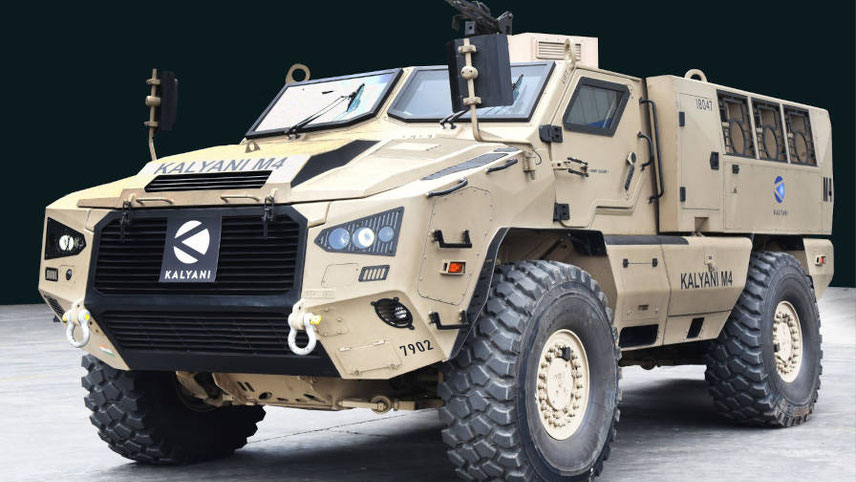
Bharat Forge is betting big on the defence sector
To get over the past dependence on Russia and the inherent legacy issues, India has also been diversifying its arms imports. France has been a major beneficiary. Dassault Aviation which bagged the Rs58,000-crore contract for 36 Rafale fighter jets is on its way to again win a contract from the Navy for 27 fighters, leaving behind Boeing’s F/A-18 Super Hornet. Bilateral defence trade with the US has jumped up from near zero in 2008 to $15 billion in 2019. Major Indian purchases from the US include long-range maritime patrol aircraft, C-130 transport aircraft, missiles and drones.
Defence governance
However, to make our defence manufacturing base more dynamic, the government will have to bring in reforms in the defence governance architecture, especially intervening to make the manpower skilled, reform-oriented and driven on timelines with better quality outcomes. For that, the government should encourage the entry of more domain experts in the Defence Ministry, given that the infusion of new technology and artificial intelligence has challenged conventional military doctrines and decision-making.
The industry and armed forces strongly believe in a bureaucracy that will act as a facilitator and not otherwise. While the government has done well to streamline the Ordinance Factory Board by dividing its factories into several distinct PSUs, it is also desirable to reform the DRDO. Accountability and transparency have to be seeded into the functioning of this important organisation which, while delivering several Make in India projects, has faltered in making India a defence manufacturing hub.
If Rajnath Singh can achieve all this in the remaining years of his tenure, his legacy as an effective Raksha Mantri will endure for several years and decades.
